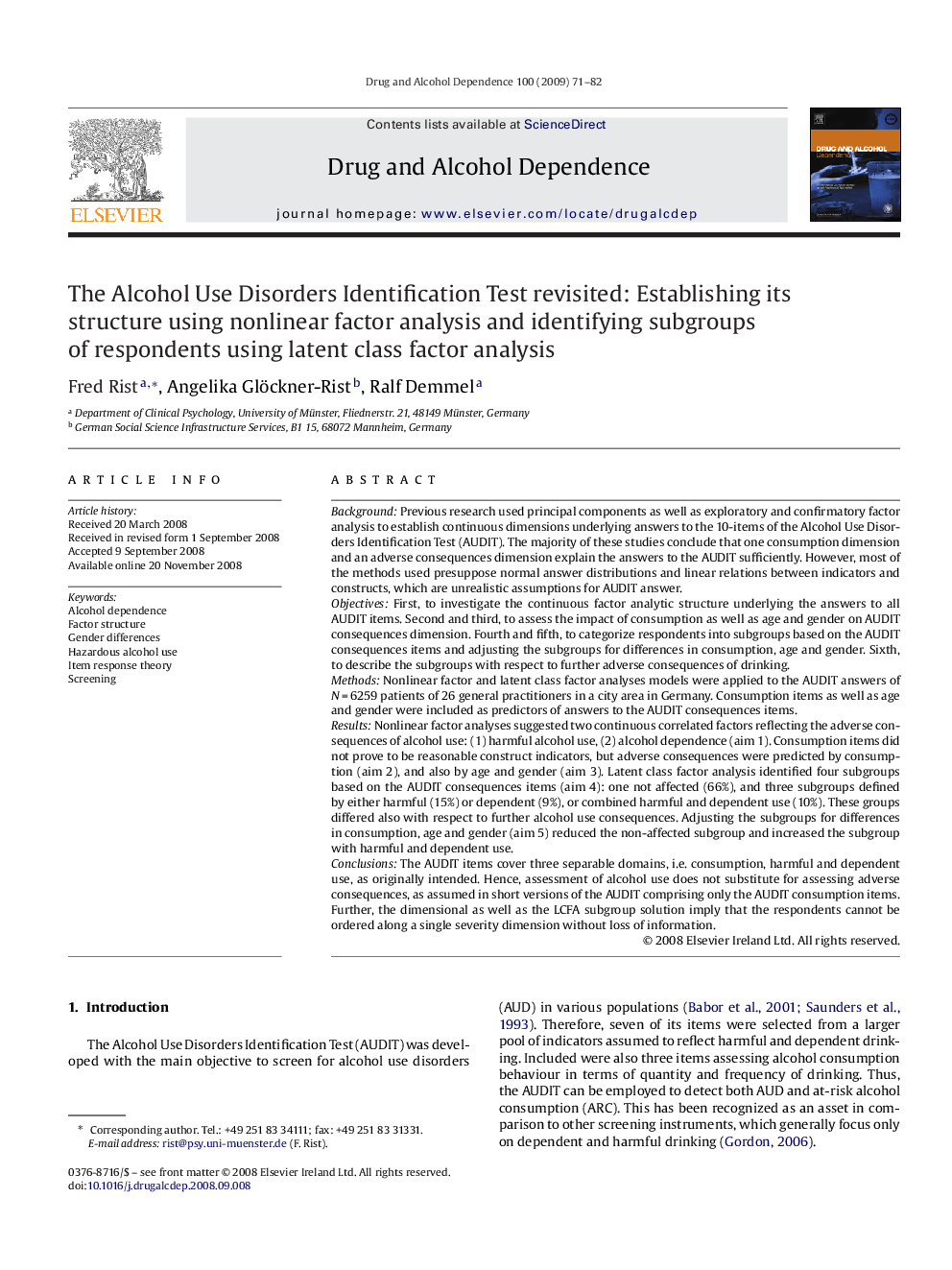| کد مقاله | کد نشریه | سال انتشار | مقاله انگلیسی | نسخه تمام متن |
|---|---|---|---|---|
| 1070995 | 1486192 | 2009 | 12 صفحه PDF | دانلود رایگان |

BackgroundPrevious research used principal components as well as exploratory and confirmatory factor analysis to establish continuous dimensions underlying answers to the 10-items of the Alcohol Use Disorders Identification Test (AUDIT). The majority of these studies conclude that one consumption dimension and an adverse consequences dimension explain the answers to the AUDIT sufficiently. However, most of the methods used presuppose normal answer distributions and linear relations between indicators and constructs, which are unrealistic assumptions for AUDIT answer.ObjectivesFirst, to investigate the continuous factor analytic structure underlying the answers to all AUDIT items. Second and third, to assess the impact of consumption as well as age and gender on AUDIT consequences dimension. Fourth and fifth, to categorize respondents into subgroups based on the AUDIT consequences items and adjusting the subgroups for differences in consumption, age and gender. Sixth, to describe the subgroups with respect to further adverse consequences of drinking.MethodsNonlinear factor and latent class factor analyses models were applied to the AUDIT answers of N = 6259 patients of 26 general practitioners in a city area in Germany. Consumption items as well as age and gender were included as predictors of answers to the AUDIT consequences items.ResultsNonlinear factor analyses suggested two continuous correlated factors reflecting the adverse consequences of alcohol use: (1) harmful alcohol use, (2) alcohol dependence (aim 1). Consumption items did not prove to be reasonable construct indicators, but adverse consequences were predicted by consumption (aim 2), and also by age and gender (aim 3). Latent class factor analysis identified four subgroups based on the AUDIT consequences items (aim 4): one not affected (66%), and three subgroups defined by either harmful (15%) or dependent (9%), or combined harmful and dependent use (10%). These groups differed also with respect to further alcohol use consequences. Adjusting the subgroups for differences in consumption, age and gender (aim 5) reduced the non-affected subgroup and increased the subgroup with harmful and dependent use.ConclusionsThe AUDIT items cover three separable domains, i.e. consumption, harmful and dependent use, as originally intended. Hence, assessment of alcohol use does not substitute for assessing adverse consequences, as assumed in short versions of the AUDIT comprising only the AUDIT consumption items. Further, the dimensional as well as the LCFA subgroup solution imply that the respondents cannot be ordered along a single severity dimension without loss of information.
Journal: Drug and Alcohol Dependence - Volume 100, Issues 1–2, 1 February 2009, Pages 71–82